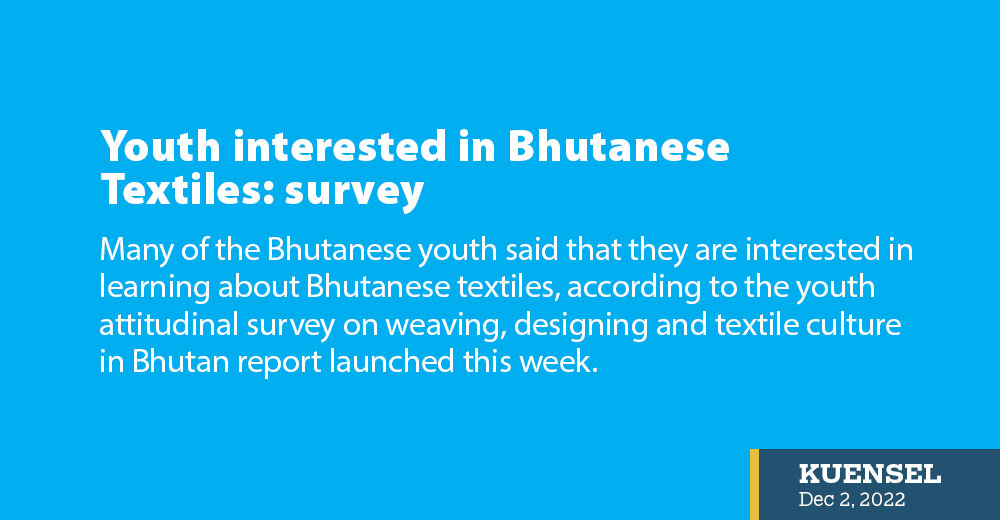Jigmi Wangdi
Many of the Bhutanese youth said that they are interested in learning about Bhutanese textiles, according to the youth attitudinal survey on weaving, designing and textile culture in Bhutan report launched this week.
The survey conducted by the Royal Textile Academy (RTA) aimed to capture the youth’s perspective on the Bhutanese weaving culture.
More than 71 percent of the respondents in the survey strongly agreed that they are interested in the traditional art of weaving. An overwhelming 86.7 percent of the respondents believed that weaving can be a viable source of income while 55 percent wanted to take up weaving as gainful employment.
According to the survey, youths are generally interested in weaving and textile design. Some 59 percent of the respondents said that they would be interested to learn weaving and designing if it were available in schools and education institutes.
Although the youth take pride in wearing gho and kira woven in Bhutan, the general notion seen was the ‘expensiveness’ of the attires. However, there is a consensus of 96.1 percent of the respondents that traditional weaving should be preserved.
The survey also found that 83.3 percent of youth agreed on the importance of design training. However, for the effectiveness of various training, access to financial assistance, marketing and promotion and access to raw materials was considered important. 83 percent of the respondents strongly agreed that the development of entrepreneurial skills is highly important for efficiency.
RTA Deputy Director Ugyen Tenzin said that RTA is interested in learning the youth’s attitude towards weaving, designing and the textile culture.
“We are planning to establish a Faculty for Textiles and Design and we have to understand the youth’s perspectives and level of interest so that we can align our programs with their expectations,” he said.
The survey is able to show an overall view of the youth’s perception of Bhutanese textiles. For instance, the survey showed a general consensus that the youth were not too familiar with the diversity of Bhutanese textiles. According to the survey, the youth’s level of exposure to weaving is low when compared to their exposure to other forms of our culture, namely traditional Bhutanese songs and dances.
This is the first time RTA conducted a survey on youth’s attitude towards traditional Bhutanese textiles and weaving.


